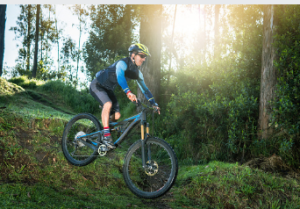Mountain bikes are some of the best ways to enjoy the outdoors and get exercise. They are perfect for riders of all ages and skill levels. If you want to buy a new mountain bike, consider a few things to ensure you get a bike right for you.
 Full suspension
Full suspension
Full-suspension mountain bikes are designed to take the strain out of rough terrain. It means better traction and more comfort. In addition, with this type of bike, you can ride longer and faster.
Pushbikes mountain bikes NZ are primarily used for trail riding and XC courses. They are often equipped with dropper seat posts, which keep your saddle low and allow you to throw weight over the rear wheel when climbing or descending. The bike will also include a shock to absorb bumps.
Unlike the hardtail, a full-suspension bike has a front fork and rear shock. The front suspension forks usually are telescopic, and the wonders use pressurised air. Depending on the riding condition, bushings may wear out.
A good fork will allow you to adjust the rebound and compression of the suspension, allowing you to ride in style. Unfortunately, high-quality forks also have lockouts.
Almost all full-suspension bikes have disc brakes. Disc brakes offer better modulation of braking pressure and consistent braking in all conditions, and hydraulic disc brakes are the best-performing system. A cable controls mechanical disc brakes.
Front Suspension
A front suspension on a mountain bike compresses the front wheel, which in turn absorbs impacts. It does this in part by adjusting the speed of the fork, known as damping. It is a process that depends on the riding you are doing.
There are several types of front suspension systems. Some are based on coil springs, while others feature air springs. These can be more adjustable and reliable.
The best way to determine which is right for you is to consider the terrain you will be riding. For example, a hardtail is a way to go if you are mainly on smooth roads. However, a complete suspension system will be more appropriate if descending downhill.
Most mountain bikes have some form of front suspension, but they all work differently. In addition, different manufacturers manufacture different forks for different kinds of riding. Among the most notable are RockShox, Ohlins, and Marzocchi.
Front forks are telescopic forks. Stanchion tubes slide into the fork’s lower legs, and a linear bearing moves up and down along the fork.
Several other components make up a fork. These include the bushings, seals, and garter springs. In addition, some models have a valve that allows riders to adjust the air pressure.
The most important thing to remember about suspension is that it helps your wheels to track the terrain. Unlike a regular bicycle, a break occurs when your tires hit a bump, a rock, or a tree. Consequently, it provides a more comfortable ride.
Wider tires
Wider tires on Pushbikes mountain bikes NZ can offer several advantages. A more comprehensive profile is better for rolling over obstacles, while a thicker compound can give you more grip on the sides. Of course, these benefits can vary depending on the terrain you ride.
There are two main types of mountain bike tires. The first type is the “classic” tire. It uses a different rubber compound and tread pattern for better durability and grip on rough surfaces.
The second type is the “plus” tire. This one is a little more complex, but it’s a must-have for those who ride off-road. In addition to more traction, the plus-sized tire offers higher rolling resistance, grip, and durability.
One of the benefits of choosing a higher-volume tire is that it can be inflated to lower pressure, which makes it more efficient for long-distance riding. However, the downside is that you may be sucked into a soft patch.
Frame materials
The mountain bike industry has invested a lot of time, money, and effort into developing carbon fibre and other materials for frame construction. With so many different choices, understanding each material’s qualities is essential. There are four different types of materials commonly used for mountain bike frames. These are aluminium, titanium, steel, and Chromoly.
Aluminum is the most common material for modern MTB frames. It is because it’s inexpensive, durable, and lightweight. In addition, it is easy to work with. However, it lacks a springy feel and is perceived to have a harsher ride than other frame materials.
Aluminium and carbon are both relatively strong. An adequately designed bicycle frame can withstand millions of loads. Carbon is known for its power transfer and comfort over bumps. As technology progresses, carbon frames are available at lower prices.
Carbon frames are stiffer than aluminium, so they are ideal for acceleration and power transfer. Carbon frames are also more durable than aluminium. An aluminium frame can be a better choice if you plan on riding in a rugged landscape.
Although aluminium is the most popular material for mountain bike frames, it does have some weaknesses. Depending on the model, it’s more likely to break than bend after an accident. To avoid this, purchasing a protective paint coat is a good idea.
A bike frame made of carbon fibre is lighter and stiffer. It helps to achieve precise steering. However, despite the increased stiffness, it’s prone to damage from saltwater and other chemicals.
